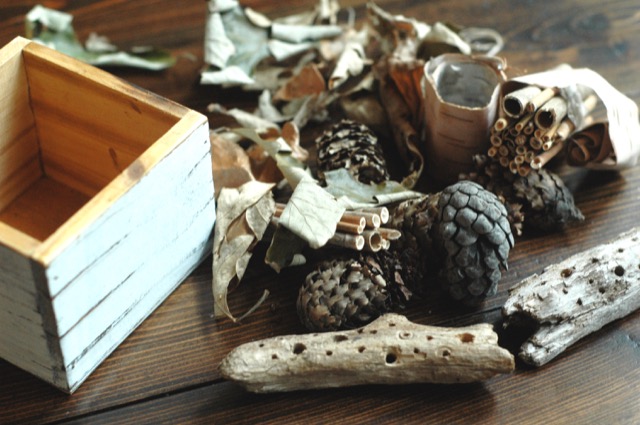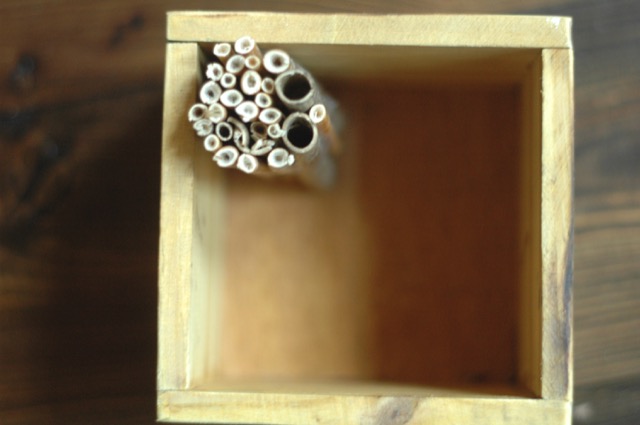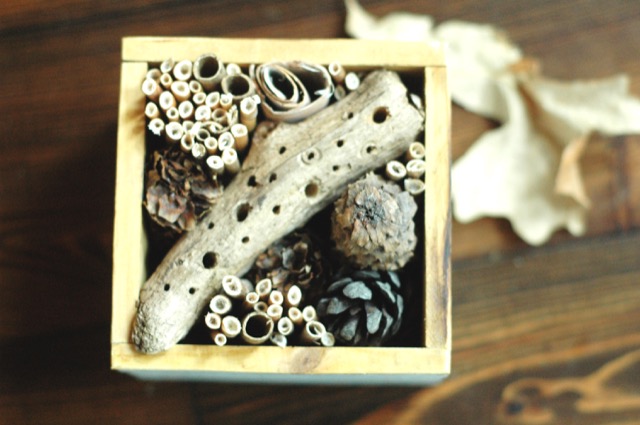Bees, wasps, ants, butterflies, moths, flies and beetles all help to pollinate plants by carrying pollen that they collect on their bodies from one plant to another. Honeybees are a pollinator most of us are familiar with because of their slightly intimidating stingers, their lively buzz, and the delicious honey they produce. Honeybees live in community – workers, drones, and one queen per colony live and work together. However, there are many solitary bees in your yard and neighbourhood that may appreciate cozy accomodations to cuddle into for a while.
Build a healthy bee habitat in your backyard! These bee hotels are for solitary bees like mason and leafcutter bees.
Supplies
- container/s
- bedding
- drill
- natural string/twine
Home/Hotel Frame
- tin can
- recycled bird house
- handmade bird house
- wood box that has a back and one open area (this can even be a repurposed drawer!)
Bedding
- hollow sticks, bamboo, stems, reeds
- pine cones
- bark
- straw, dried grass, leaves
- driftwood with holes drilled into it
- small pieces of untreated wood with holes drilled into them

Crafting your bee accomodations
- Go on a nature or farm walk to gather a variety of the materials listed above.
- If your container may get water in it from rain, consider drilling a few small drainage holes in the bottom of your box or can.
- Fill your container with your assorted natural materials. Be sure to pack them fairly tightly together. You can use a piece of string to tie a group of hollow reeds or bamboo together so they don’t fall over in your container. Get creative – this will be a special work of art adorning your yard!
- Hang your bee hotel from a tree or fence post in your yard in a sunny, dry area at least a few feet from the ground.



Important Note: Our local apiarist friends filled us in that In order to protect your local bee population from disease, it is important to remove the materials from your house and burn them at the end of the season. Then use an old toothbrush to clean your frame super well to get rid of any pathogens - do this again at the beginning of the new season before restocking your frame with new materials.







